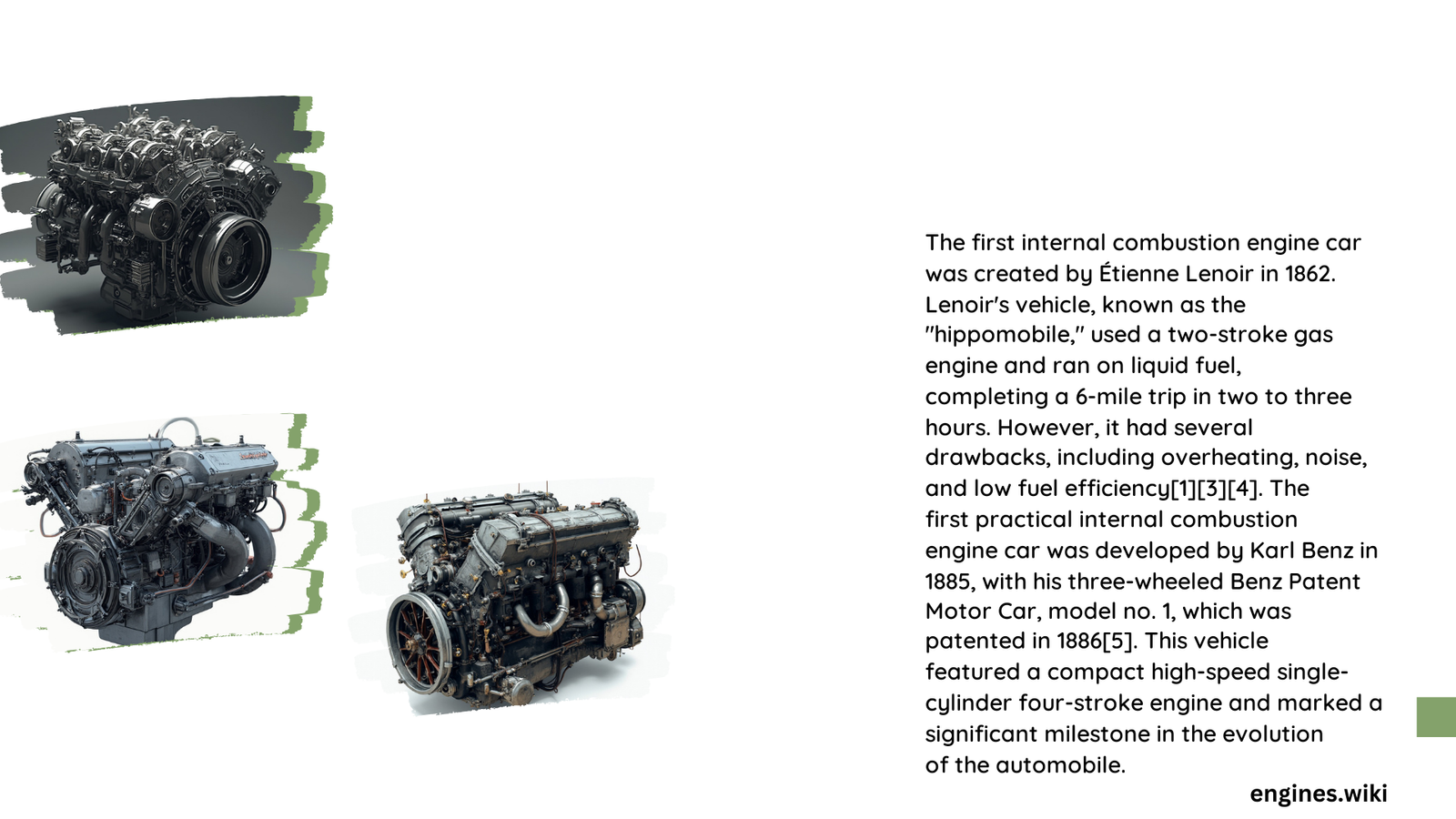The dawn of automotive technology emerged with a revolutionary invention that would forever change human mobility. In 1885, Carl Benz created the Benz Patent-Motorwagen, a groundbreaking vehicle powered by a single-cylinder internal combustion engine, marking the birth of the modern automobile and setting the stage for a transportation revolution that would connect the world in unprecedented ways.
What Made the Benz Patent-Motorwagen Unique?
The Benz Patent-Motorwagen represented a quantum leap in transportation technology. Unlike previous transportation methods relying on steam or animal power, this vehicle introduced a compact, efficient internal combustion engine that could propel a vehicle independently.
Key Technical Specifications
| Component | Specification |
|---|---|
| Engine Type | Single-cylinder, four-stroke gasoline engine |
| Horsepower | 0.75 hp (0.55 kW) |
| Cooling System | Water/thermo siphon evaporation |
| Ignition | High-voltage electrical vibrator |
| Wheel Configuration | Three wire-spoked wheels |
How Did Carl Benz Develop the First Internal Combustion Engine Car?

Carl Benz’s journey to creating the first practical automobile was marked by persistent innovation and technical brilliance. His background in mechanical engineering provided the foundational knowledge necessary to conceptualize and build a revolutionary vehicle.
Development Milestones
- 1878: Benz began experimenting with internal combustion engines
- 1885: Completed the first prototype of the Patent-Motorwagen
- January 29, 1886: Applied for patent registration
- July 1886: First public demonstration of the vehicle
What Technical Challenges Did Benz Overcome?
Developing the first internal combustion engine car was not without significant challenges. Benz had to solve multiple complex engineering problems:
- Engine Efficiency: Creating a compact engine that could generate consistent power
- Cooling Mechanism: Developing a reliable cooling system to prevent overheating
- Structural Design: Constructing a lightweight yet sturdy frame
- Fuel Management: Designing a carburetor that could efficiently mix fuel and air
What Impact Did the Benz Patent-Motorwagen Have on Transportation?
The invention represented more than just a technological achievement. It symbolized a paradigm shift in human mobility, offering:
- Personal Transportation: First practical alternative to horse-drawn carriages
- Industrial Innovation: Sparked massive automotive manufacturing developments
- Economic Transformation: Created entirely new industries and job markets
Performance Characteristics
- Top Speed: 10-15 km/h (6-9 mph)
- Fuel Type: Gasoline
- Range: Limited but demonstrated practical potential through Bertha Benz’s 180 km journey
What Made the Vehicle Commercially Viable?
Several factors contributed to the Benz Patent-Motorwagen’s success:
- Compact and efficient single-cylinder engine
- Innovative cooling and ignition systems
- Tubular steel frame providing structural integrity
- Practical design that addressed transportation limitations of the era
How Did the World Respond to This Innovation?
Initial reactions were mixed. While some saw the potential, many were skeptical about replacing horse-drawn transportation. However, Bertha Benz’s legendary 180 km journey in 1888 demonstrated the vehicle’s practical capabilities and captured public imagination.
Global Recognition
- Patent granted in 1886
- First public demonstration in July 1886
- Recognized as the official “birth certificate” of the automobile
What Legacy Did Carl Benz Create?
The Benz Patent-Motorwagen wasn’t just a vehicle; it was a harbinger of technological transformation. It laid the groundwork for modern automotive engineering, inspiring generations of inventors and engineers.
Subsequent Innovations
- Development of more efficient engines
- Introduction of advanced steering systems
- Establishment of automotive manufacturing industries
Conclusion
Carl Benz’s Patent-Motorwagen represents a pivotal moment in human technological progress. By solving complex engineering challenges, Benz didn’t just create a vehicle—he initiated a transportation revolution that would reshape global society.
